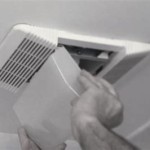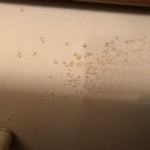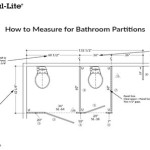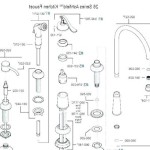How to Run Duct for a Bathroom Fan
Proper ventilation in a bathroom is crucial for preventing moisture buildup, which can lead to mold and mildew growth, structural damage, and unpleasant odors. A bathroom fan serves this purpose, and its effectiveness largely depends on the correct installation of the ductwork. This article provides a comprehensive guide on how to run duct for a bathroom fan, covering planning, material selection, installation techniques, and troubleshooting common issues.
Planning the Duct Run
Effective planning is the foundation of a successful duct installation. This phase involves assessing the bathroom layout, determining the optimal fan location, and mapping the duct path to the exterior. The primary goal is to create a direct and efficient route for exhausting air, minimizing bends and maximizing airflow.
First, consider the location of the bathroom fan. Ideally, it should be positioned near the shower or bathtub, the primary source of moisture. A central location can also be effective, but ensure it's not obstructed by fixtures or structural elements. Check local building codes for specific requirements regarding fan placement.
Next, identify a suitable exit point for the duct. This could be through the roof, a sidewall, or an existing vent. Roof venting is generally preferred as it naturally allows rising moisture to escape, but sidewall venting can be more practical in certain situations. Ensure the exit point complies with local regulations regarding proximity to windows, doors, and other openings.
Once the fan location and exit point are determined, map the duct path. The shortest and straightest route is always the best. Minimize the number of bends, as each bend restricts airflow. If bends are unavoidable, use gradual curves rather than sharp angles. Note the length of the duct run, the number of bends, and any obstacles that need to be navigated. This information will be crucial for selecting the appropriate fan size and duct material.
Calculate the required fan CFM (cubic feet per minute) based on the bathroom's size. A general rule of thumb is to use 1 CFM per square foot of bathroom area. For bathrooms with high ceilings or frequent shower use, increase the CFM accordingly. Consult online calculators or HVAC professionals for more precise calculations.
Selecting Duct Materials and Tools
Choosing the right materials and tools is essential for a durable and efficient duct installation. Several types of duct material are available, each with its own advantages and disadvantages. The tools required will depend on the selected material and the specific installation requirements.
Rigid metal duct is the preferred choice for bathroom fan exhaust. It offers excellent airflow, durability, and fire resistance. Galvanized steel and aluminum are common materials. Rigid duct is less prone to sagging and maintains its shape, ensuring consistent airflow. However, it can be more difficult to install due to its rigidity and requires specialized cutting and joining tools.
Flexible duct is easier to install and can navigate tight spaces. It's typically made of aluminum foil or plastic, reinforced with a wire helix. Flexible duct is more affordable and readily available. However, it offers less airflow than rigid duct due to its corrugated interior, which creates friction. It's also more prone to sagging and can trap dust and moisture if not properly installed. Use flexible duct only when necessary, such as for short connections between the fan and the main duct run.
Insulated duct is recommended for attics or unconditioned spaces to prevent condensation and heat loss. It consists of a layer of insulation wrapped around the duct, typically fiberglass or foam. Insulated duct helps maintain the temperature of the exhausted air, preventing moisture from condensing inside the duct. This is particularly important in cold climates.
Essential tools for duct installation include a measuring tape, pencil, utility knife, duct cutter (for rigid duct), screwdriver, drill, level, sealant, and duct tape (foil tape is preferred). Safety glasses and gloves are also recommended to protect your eyes and hands.
Installation Procedures and Considerations
The installation process involves connecting the duct to the fan, routing it to the exterior, and ensuring proper sealing and support. Following proper procedures is crucial for maintaining airflow, preventing leaks, and ensuring the longevity of the system.
Begin by attaching the duct connector to the bathroom fan. Most fans have a pre-installed collar or require a separate connector. Secure the connector with screws or clamps, ensuring a tight and airtight seal. Apply sealant around the joint to further prevent air leakage.
Route the duct along the planned path, connecting sections as needed. For rigid duct, use metal screws or clamps to join sections. Overlap the duct sections slightly in the direction of airflow to prevent moisture buildup. For flexible duct, secure the connections with clamps and duct tape. Ensure the duct is properly supported along its length to prevent sagging. Use straps or hangers to suspend the duct from joists or rafters, spacing them every few feet.
When passing the duct through walls or ceilings, use a proper duct boot or flange to create a clean and sealed penetration. This prevents air leakage and protects the surrounding structure. Insulate the duct where it passes through unconditioned spaces to minimize condensation. When connecting to the exterior vent cap, ensure a tight and weather-resistant seal. Use sealant around the joint and secure with screws or clamps.
Once the duct is installed, inspect it for leaks and proper support. Use a smoke test or a simple visual inspection to identify any air leaks. Repair any leaks with sealant or duct tape. Ensure the duct is properly supported to prevent sagging and maintain airflow. Test the fan to ensure it's operating effectively and exhausting air properly.
Considerations should involve fire safety. Use fire-resistant materials, especially when running duct through fire-rated walls or ceilings. Install a backdraft damper at the exterior vent to prevent outside air from entering the bathroom. This is particularly important in cold climates.
Troubleshooting Common Issues
Even with careful planning and installation, problems can arise with bathroom fan ductwork. Identifying and addressing these issues promptly is crucial for maintaining the fan's effectiveness and preventing damage.
Reduced airflow is a common issue. This can be caused by several factors, including obstructed ductwork, excessive bends, undersized duct, or a malfunctioning fan. Check the duct for obstructions, such as debris or pinched sections. Replace any damaged or undersized duct. Ensure the fan is clean and operating at its rated CFM. Consider upgrading the fan if the existing one is insufficient for the bathroom's size.
Condensation and moisture buildup can lead to mold and mildew growth. This is often caused by inadequate insulation, air leaks, or a poorly sealed duct system. Insulate the duct, especially in unconditioned spaces. Seal any air leaks with sealant or duct tape. Ensure the duct is properly sloped to allow condensation to drain towards the exterior. Install a drip leg at the lowest point of the duct to collect any remaining moisture.
Noise can be caused by a vibrating fan, loose ductwork, or excessive airflow turbulence. Check the fan mounting to ensure it's secure. Secure loose ductwork with straps or hangers. Reduce the number of bends in the duct or use larger diameter duct to minimize turbulence. Consider installing a sound-dampening material around the fan or ductwork.
Backdrafting can occur when outside air enters the bathroom through the duct. This is usually caused by a faulty or missing backdraft damper. Inspect the backdraft damper and replace it if necessary. Ensure the damper is properly installed and opens and closes freely. Consider installing a motorized damper that opens only when the fan is operating.
Regular maintenance is essential for preventing problems. Clean the fan and ductwork periodically to remove dust and debris. Inspect the duct for leaks and damage. Replace any worn or damaged components. By addressing these issues promptly, one can maintain the effectiveness of your bathroom fan and ensure a healthy and comfortable environment.

Venting A Bath Fan In Cold Climate Fine Homebuilding
Bathroom Exhaust Fans Building America Solution Center

Installing A Bathroom Fan Fine Homebuilding

Blog

How To Replace And Install A Bathroom Exhaust Fan From Start Finish For Beginners Easy Diy

How To Properly Vent Your Bath Fan Venting 101

Adding A Bathroom Fan Fine Homebuilding

The Basics Of Bath Fans Fine Homebuilding

How To Install A Bathroom Exhaust Fan Ducting Full Walkthrough Broan 688 Builds By Maz

Install A New Bathroom Vent Fan Light The San Fernando Valley Sun
Related Posts







